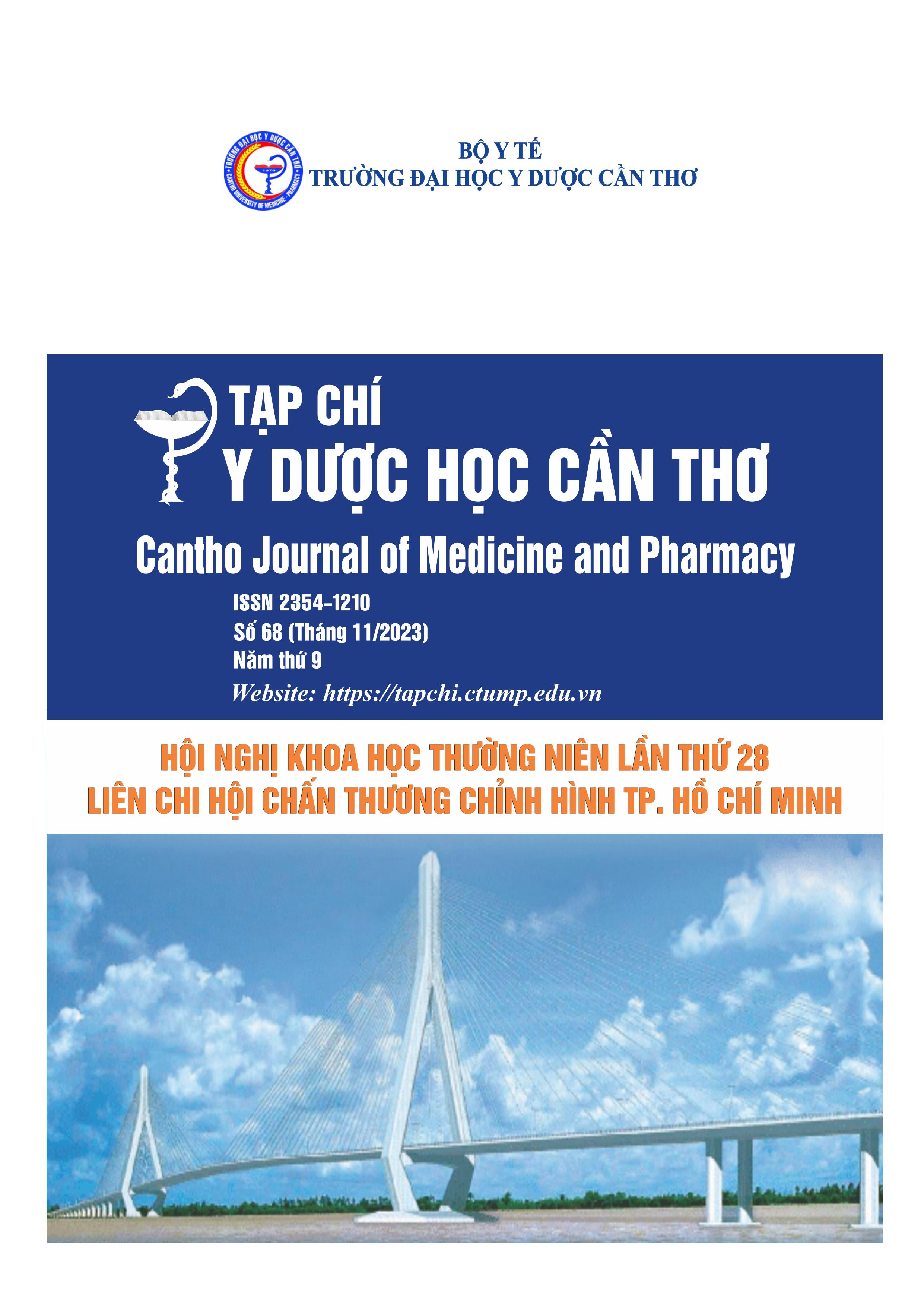EVALUATION THE RESULTS TREATMENT OF PERILUNATE DISLOCATION BY OPEN REDUCTION AND REPAIR OF THE SCAPHOLUNATE LIGAMENT
Main Article Content
Abstract
Background: Perilunate dislocations are rare high-energy injuries constituting less than 10% of all wrist injuries. Wrist instability after perilunate dislocation is inevitable if the dislocation is simply reduced. Therefore, treatment of perilunate dislocation needs to ensure two important factors: reducting the dislocation and restoring the stability of the wrist joint through restoring the ligaments. Objectives: Evaluate the results of treatment of perilunate dislocation by open reduction and scapholunate ligament repair. Materials and method: Studying on the biomechanical anatomy of the scapholunate ligament applied in the treatment of wrist instability after perilunate dislocation for 48 patients (46 males, 02 females; mean age 37.8 years old). Using a dorsal approach, open reduction and Scapholunate ligament repair for 48 cases, The perilunate dislocation was reduced and the carpal bones and midcarpal joint were held in anatomical position using two K-wires transfixing the scapholunate, lunotriquetral. Results: The majority of patients had no pain, and wrist function was restored well. After surgery, majority of patients (44 out of 48) had relief of pain. The average wrist motion was 77.820 extension, 73.650 flexion, mean grip strength was 41.25 ± 5.35kg. There were 39 excellent, 2 good and 7 poor results. The average follow-up time was 36.20 months. Surgical procedures included open reduction, SLL repair. Average functional score was: 81.30 (very good). Conclusion: A dorsal approach to the wrist provides adequate exposure for reduction of carpal bones, scapholunate repair or reconstruction. Although perilunate dislocations are challenging problems to treat, all of the patients had acceptable pain relief and achieved sufficient range of motion and strength to return to gainful employment.
Article Details
Keywords
Perilunate dislocation, SLL, SLL repair
References
2. Rosati M, Parchi P, Cacianti M, Poggetti A, Lisanti M. Treatment of acute scapholunate ligament injuries with bone anchor. Musculoskeletal surgery. 2010. 94(1), 25-32, doi: 10.1007/s12306-010-0057-8.
3. Minami A, Kaneda K. Repair and/or recostruction of the scapholunate interosseous ligament in lunate and perilunate dissociation. J Hand Surg. 1993.18A, 1099–1106, doi: 10.1016/03635023(93)90410-5.
4. Bikert B, Sauerbier M, German G. Scapholunate ligament repair using the Mitek bone anchor. J Hand Surg. 2000. 25B, 188–192.
5. Pilny ́ J, Kubes J, Cizma ́r I, Visna P. Our experience with repair of the scapholunate ligament using the MITEK bone anchor. Acta Chir Orthop Traumatol Cech. 2005. 72(6), 381–386.
6. Liang Kailu, Xiang Zhou, Huang Fuguo. Chronic perilunate dislocation treated with open reduction and internal fixation: results of medium-term follow-up. International Orthopaedics (SICOT). 2010. 34, 1315-1320, doi: 10.1007/s00264-009-0926-7.


